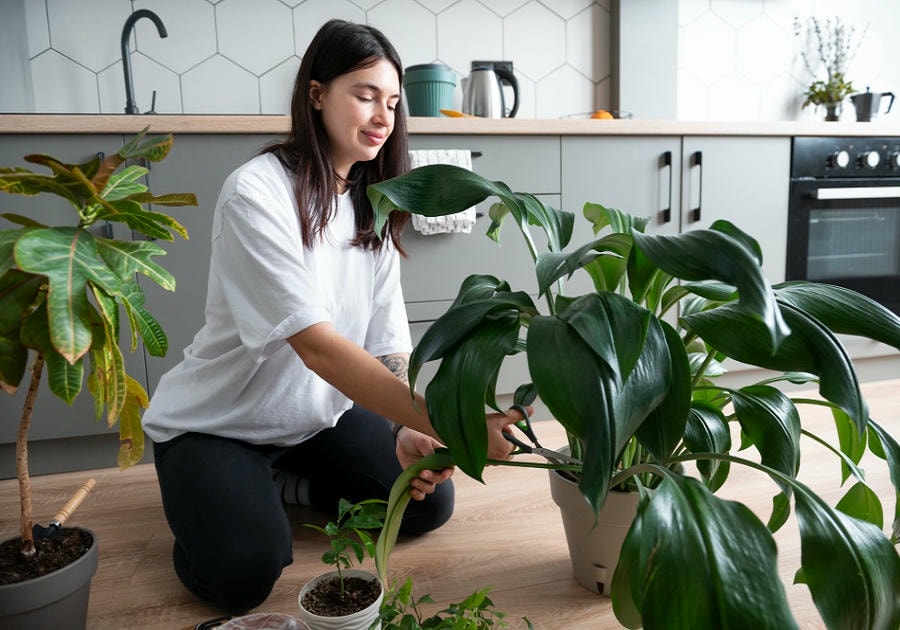Transforming your yard into a vibrant oasis bursting with life and color is a dream for many homeowners. Whether you’re a seasoned gardener or just starting out, there’s always room to enhance your green thumb skills. In this comprehensive guide, we’ll explore expert gardening tips to help you create a stunning outdoor space that will leave your neighbors green with envy.
Assess Your Space
Before diving into gardening projects, take some time to assess your yard’s layout, sunlight exposure, soil quality, and existing plants. Understanding these factors will guide your plant selection and layout decisions. Consider creating a rough sketch of your yard to plan out areas for flower beds, shrubs, and other features.
Choose the Right Plants: Essential Gardening Tips for Selecting the Perfect Greenery
Choosing the correct plants is essential for a prosperous garden. Consider factors such as your climate zone, sunlight availability, soil type, and water requirements. Opt for a mix of perennial flowers, annuals for seasonal color bursts, and native plants that thrive in your region. Additionally, choose a variety of plants with different bloom times to ensure continuous color throughout the growing season.
Prepare the Soil
A flourishing garden starts with nourished soil. Before gardening, enrich your soil with organic matter such as compost, aged manure, or peat moss to improve its fertility and texture. Use a soil test kit to determine pH levels and nutrient deficiencies, and amend the soil accordingly. Proper gardening soil preparation will provide essential nutrients and moisture retention for your plants.
Plant with Care
When planting flowers and shrubs, follow spacing recommendations to allow for proper growth and airflow. Dig planting holes slightly larger than the root ball and gently loosen roots before placing them in the ground. After backfilling with soil, gently compact and thoroughly water to ensure root settlement. Apply mulch around plants to inhibit weed growth, maintain moisture, and stabilize soil temperature.
Water Wisely
Adequate watering is vital for the health and growth of plants in gardening. Water newly planted flowers and shrubs deeply to encourage deep root establishment, then gradually taper off as they become established. Use a soaker hose or drip irrigation system to deliver water directly to the root zone and minimize evaporation. Water early in the morning to reduce fungal diseases and avoid watering foliage to prevent leaf burn.
Maintain Regularly
Consistent upkeep is essential for maintaining the optimal appearance of your garden. Engage in regular gardening tasks such as removing spent flowers to encourage continuous blooming, deadheading annuals to prolong their flowering period, and pruning shrubs to maintain shape and size. Keep a close watch for pests and diseases, taking immediate action to curb spreading infestations. Regularly weed to prevent unwanted plants from overshadowing your garden’s beauty.
Embrace Diversity
Diversity enhances both the visual appeal and the health of your garden. Incorporate a mix of flowers, shrubs, trees, and other plant types to create a balanced ecosystem that supports pollinators, beneficial insects, and birds. Include plants with varying heights, textures, and colors to add interest and dimension to your landscape.
Add Personal Touches
Enhance the beauty of your garden with personal touches such as decorative planters, garden ornaments, pathways, and seating areas. Incorporate elements that reflect your personality and style, whether it’s a whimsical garden sculpture or a cozy bench nestled among flowers. These additions, along with practical gardening tips, will not only enhance the visual appeal of your yard but also create inviting spaces to relax and enjoy nature.
Conclusion
Transforming your yard into a blooming paradise is a rewarding endeavor that brings joy and beauty to your outdoor space. By following these expert gardening tips, you can create a vibrant and thriving garden that will be the envy of the neighborhood. With careful planning, proper care, and a little creativity, you’ll enjoy a stunning landscape bursting with color and life for years to come.
Frequently Asked Questions (FAQs):
- How often should I water my garden?
- The frequency of watering depends on various factors such as plant type, soil type, weather conditions, and time of year. As a general rule, water deeply but infrequently to encourage deep root growth. Monitor soil moisture levels and adjust watering accordingly, aiming to keep the soil consistently moist but not waterlogged.
- What are the best plants for a low-maintenance garden?
- Opt for drought-tolerant and native plant species that require minimal watering and upkeep once established. Succulents, ornamental grasses, lavender, yarrow, and Russian sage are excellent choices for low-maintenance gardens. Additionally, consider incorporating perennial plants that require minimal pruning and deadheading.
- How can I attract pollinators to my garden?
- To attract pollinators such as bees, butterflies, and hummingbirds, plant a diverse selection of flowering indoor plants that provide nectar and pollen throughout the growing season. Include native wildflowers, herbs, and flowering shrubs in your garden, and avoid using pesticides that may harm beneficial insects.
- What should I do with garden waste such as leaves and trimmings?
- Garden waste such as leaves, grass clippings, and plant trimmings can be composted to create nutrient-rich organic matter for your garden. Start a compost pile or use a compost bin to recycle organic waste into compost, which can then be used to enrich soil and fertilize plants naturally.
Read Also – Discover the Beauty of Evergreen Flowering Plants in India






